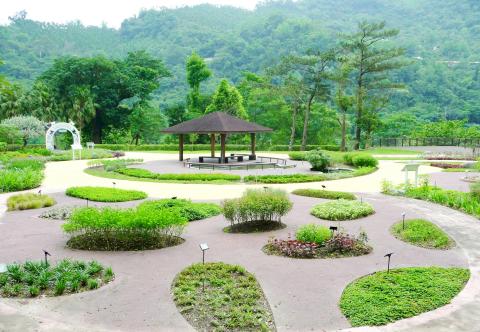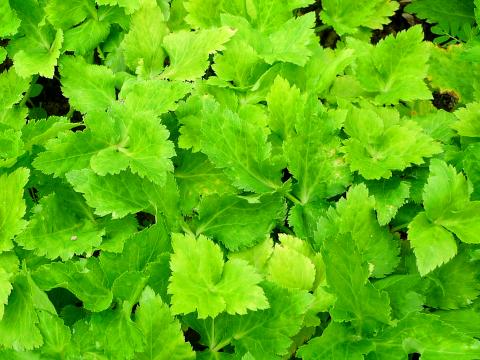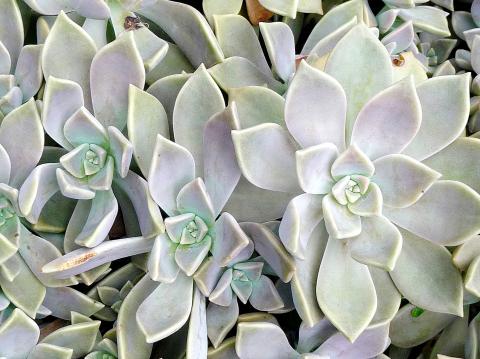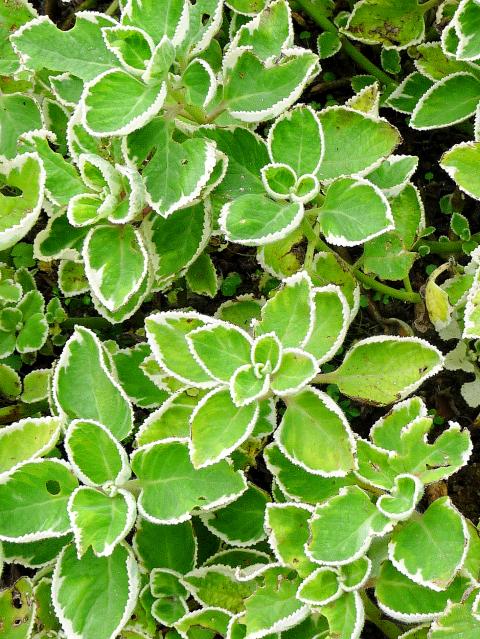For thousands of years, in Taiwan as in many parts of the world, herbs have been used to flavor food and to treat various ailments.
Locally, the overlap between cuisine and medicine is considerable. As Cathy Erway, author of The Food of Taiwan, recently told me by e-mail: “Plenty of everyday foods and drinks are known to have medicinal qualities, like grass jelly (仙草, Platostoma palustre, Chinese mesona or xiancao). It’s made from a herb that has cooling and refreshing qualities, but not much taste. Then there are much more assertive flavors consumed for their health benefits, like bitter melon juice (苦瓜汁). Both are so common it’s hard to tell if people eat or drink them for the medicinal effects, or purely because they like them. But there’s definitely an ingrained sense of food as medicine among eaters in Taiwan, more so than in the West.”
Over the past half century, Taiwan’s lowlanders have lost much of the traditional ecological knowledge that helped their ancestors survive. Among indigenous elders, however, there’s still a wealth of know-how which researchers are endeavoring to preserve.

Photo: Steven Crook
A survey, conducted a decade ago among eight extended families in a Bunun (布農族) community in Nantou County, identified 264 useful plant species. Over half had more than one function: 142 were food plants, while 65 could be used to make tools. Some 37 had medicinal applications, while 10 were suitable for making clothes or footwear.
A good place to see versatile plants is the Hundred Herbs Garden (百草園) inside Jhihben National Forest Recreation Area (知本森林遊樂區), about 18km southwest of Taitung City. The garden covers around 1,000 square meters and displays more than 50 herb species.
Some interesting information about the garden’s plants — among them the grass jelly mentioned by Erway — is presented on-site in English, but for the majority of species, there’s nothing beyond the scientific name. In this article, I aim to fill a few of the gaps, so international travelers can get a bit more out of their visit.

Photo: Steven Crook
National Taiwan University’s “Plants of Taiwan” Web pages lists Eupatorium formosanum (台灣澤蘭) as endemic to Taiwan, and according to other sources, this perennial herb also grows in Japan’s Ryukyu Islands. It’s been used to treat cholera, hemorrhoids, inflammation, neuralgia, prenatal edema, rheumatism and other conditions.
Eupatorium formosanum was first described in 1908 by Bunzo Hayata (1874-1934), a Japanese botanist who made a huge contribution to the study of Taiwan’s flora. Between 1900 and 1921, he named around 1,600 new taxa of vascular plants from the island. Among them is Taiwania cryptomerioides (台灣杉), one of the largest tree species in Asia.
Curiously, according to a 2009 paper outlining Hayata’s life and work, the Japanese scientist, “did not accept Darwin’s concept of evolution, the survival of the fittest, but instead believed in the eternal life of species based on the diversity of plants in the tropics that he observed during his work in Taiwan and Indochina.”

Photo: Steven Crook
Aspidistra elatior var. Attenuata (台灣蜘蛛抱蛋) is an endemic variation of a plant also found in Japan and China. The latter is known to gardening enthusiasts in the English-speaking world as the “Cast Iron Plant,” because it thrives even when neglected.
For a long time, it was believed that this plant was pollinated by slugs — rather than by flying insects, like the vast majority of plants. However, a few years ago scientists in Japan discovered that its flowers are pollinated by fungus gnats. It’s thought the flowers’ appearance and odor fool the gnats into thinking they’re mushrooms.
If you rub your fingers on the leaves of Cryptotaenia japonica (鴨兒芹), you’ll likely recognize the smell, and understand why the species is also called East Asian wild parsley. Like the garden parsley (Petroselinum crispum) that’s native to countries around the Mediterranean, it’s a member of the Apiaceae family, and thus related to celery and carrot. The leaves of Cryptotaenia japonica are used as a garnish, while the roots and stems are often eaten as a vegetable.

Photo: Steven Crook
A succulent plant native to Madagascar, Bryophyllum pinnatum (落地生根) is now considered a naturalized species in Taiwan. According to The Catalog of Medicinal Plant Resources in Taiwan (臺灣藥用植物資源名錄), published in 2003 by the Department of Health (predecessor to Taiwan’s Ministry of Health and Welfare), various parts of the plant can relieve sore throats and excessive phlegm, and help in cases of gastrointestinal bleeding. It’s also said to have some effect against hypertension. Overconsumption could be dangerous, however; the plant contains toxic compounds that appear to have induced fatal heart problems in grazing animals.
Plectranthus amboinicus (左手香, sometimes called Mexican mint) gets its Chinese name because those who handle its white-fringed leaves will afterward find a pleasant oregano-like scent on their hands. A traditional treatment for colds, fevers and throat irritations is to take some of the leaves, wash them, apply some salt and then either chew them, or crush them into a juice which is drunk. Local herbalists have also used this plant to treat heat-stroke, vomiting, chest pains and abdominal pain. In the Taiwan of yore, the leaves were also used to keep freshly-laundered clothes smelling good, and to scent a woman’s hair.
The Chinese name for Graptopetalum paraguayense means “stone lotus” (石蓮花), and the leaves do indeed look as if they’re carved from marble. English speakers sometimes call this succulent perennial “Ghost Plant” on account of its color, and a small number of people eat the leaves as a vegetable. Stripping off the thick gray skin reveals greenish flesh which quickly breaks down when cooked with chicken in a soup.
Traditional folk medicine claims this plant is useful for treating cirrhosis and other liver problems, high blood pressure and gout. There could be some truth in this: Earlier this year, Taiwanese scientists published a study suggesting that extracts of Graptopetalum paraguayense can prevent liver inflammation and fibrosis in rats.
Also represented in the garden is Chinese wormwood, aka fragrant silver weed (Crossostephium chinense, 蘄艾). It has small yellow flowers in summertime, and preparations made from its roots and leaves are said to be good at combating phlegm, relieving flatulence or increasing menstrual flow. Even if you’re highly skeptical about such claims, you’ll agree: What’s not to enjoy about this patch of unusual biodiversity?
Steven Crook has been writing about travel, culture, and business in Taiwan since 1996. He is the co-author of A Culinary History of Taipei: Beyond Pork and Ponlai, and author of Taiwan: The Bradt Travel Guide, the third edition of which has just been published.

Most heroes are remembered for the battles they fought. Taiwan’s Black Bat Squadron is remembered for flying into Chinese airspace 838 times between 1953 and 1967, and for the 148 men whose sacrifice bought the intelligence that kept Taiwan secure. Two-thirds of the squadron died carrying out missions most people wouldn’t learn about for another 40 years. The squadron lost 15 aircraft and 148 crew members over those 14 years, making it the deadliest unit in Taiwan’s military history by casualty rate. They flew at night, often at low altitudes, straight into some of the most heavily defended airspace in Asia.

Many people in Taiwan first learned about universal basic income (UBI) — the idea that the government should provide regular, no-strings-attached payments to each citizen — in 2019. While seeking the Democratic nomination for the 2020 US presidential election, Andrew Yang, a politician of Taiwanese descent, said that, if elected, he’d institute a UBI of US$1,000 per month to “get the economic boot off of people’s throats, allowing them to lift their heads up, breathe, and get excited for the future.” His campaign petered out, but the concept of UBI hasn’t gone away. Throughout the industrialized world, there are fears that

Like much in the world today, theater has experienced major disruptions over the six years since COVID-19. The pandemic, the war in Ukraine and social media have created a new normal of geopolitical and information uncertainty, and the performing arts are not immune to these effects. “Ten years ago people wanted to come to the theater to engage with important issues, but now the Internet allows them to engage with those issues powerfully and immediately,” said Faith Tan, programming director of the Esplanade in Singapore, speaking last week in Japan. “One reaction to unpredictability has been a renewed emphasis on

Taiwan’s democracy is at risk. Be very alarmed. This is not a drill. The current constitutional crisis progressed slowly, then suddenly. Political tensions, partisan hostility and emotions are all running high right when cool heads and calm negotiation are most needed. Oxford defines brinkmanship as: “The art or practice of pursuing a dangerous policy to the limits of safety before stopping, especially in politics.” It says the term comes from a quote from a 1956 Cold War interview with then-American Secretary of State John Foster Dulles, when he said: ‘The ability to get to the verge without getting into the war is